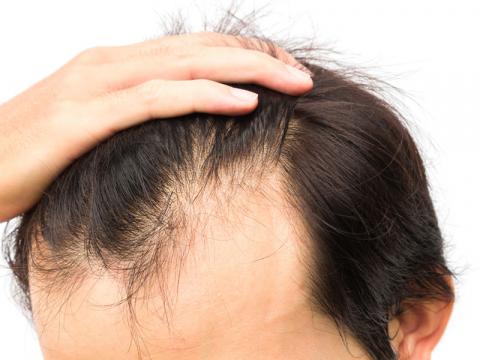
Introduction
Losing hair can be distressing, but the field of https://www.royalclinicsaudia.com/en-sa/hair-transplant/hair-restoration... made significant advancements in recent years, offering a range of solutions to help regain a fuller head of hair. From surgical procedures to non-invasive treatments, there's an option for everyone.
Understanding Hair Loss
Before diving into restoration methods, it's crucial to understand why hair loss occurs. Hair loss can be triggered by a variety of factors, including genetics, hormonal changes, and medical conditions. By addressing the underlying cause, restoration becomes more effective.
Common Causes of Hair Loss
Hair loss isn't a one-size-fits-all issue. Factors like genetics, stress, and certain medical conditions contribute to the problem. Identifying the root cause is the first step towards finding an appropriate solution.
Types of Hair Restoration
Surgical Methods
Surgical methods involve transplanting hair follicles from one area of the scalp to the thinning or balding areas. These methods include:
Follicular Unit Transplantation (FUT)
FUT involves removing a strip of scalp from the donor area and extracting individual hair follicles for transplantation.
Follicular Unit Extraction (FUE)
FUE is a meticulous process where individual hair follicles are directly extracted from the donor area and transplanted to the recipient area.
Robotic Hair Transplantation
Robotic assistance enhances precision during FUE procedures, improving the accuracy of graft extraction and placement.
Non-Surgical Methods
Non-surgical methods offer less invasive options:
PRP Therapy
Platelet-Rich Plasma therapy involves using the patient's blood to stimulate hair follicles, promoting growth.
Laser Therapy
Low-level laser therapy boosts blood flow to hair follicles, encouraging regrowth.
Topical Medications
Medications like minoxidil can slow down hair loss and promote new growth.
Choosing the Right Option for You
Factors like the extent of hair loss, budget considerations, and desired outcomes play a role in choosing the right method. Consulting with a hair restoration specialist helps make an informed decision.
The Hair Restoration Process
Understanding the process is crucial:
Pre-Procedure Preparations
Preparing for the procedure involves discussions with the surgeon, following pre-op instructions, and arranging for post-op care.
The Procedure Itself
The procedure varies depending on the chosen method, but generally involves harvesting donor hair and transplanting it to the recipient area.
Post-Procedure Care
Proper care during the recovery phase is essential for optimal results. This includes following aftercare instructions and attending follow-up appointments.
Expected Results and Recovery
Hair restoration takes time. Initial shedding is common before new hair starts to grow. Patience and consistent care are key during the recovery period.
Risks and Complications
Like any medical procedure, hair restoration carries some risks, such as infection, scarring, or unnatural-looking results. Choosing a skilled surgeon reduces these risks.
Caring for Transplanted Hair
After recovery, maintaining transplanted hair requires good hair care practices. Regular washing, proper hydration, and a balanced diet contribute to the health of your new hair.
Maintaining Long-Term Results
Long-term success involves protecting your hair from damage, managing stress, and following any recommended maintenance treatments.
Alternative Options
If surgical methods aren't your preference, wigs, hairpieces, and extensions offer temporary solutions.
Boosting Hair Health Naturally
Incorporating a balanced diet rich in vitamins and minerals supports overall hair health and growth.
Addressing Hair Loss Stigma
Society's perception of hair loss is changing, but some stigma remains. Embracing the journey and seeking support can empower individuals undergoing restoration.
Boosting Confidence Through Restoration
Regaining a full head of hair can significantly boost self-confidence and enhance overall quality of life.
Conclusion
Hair restoration is a transformative journey that offers hope to those experiencing hair loss. By understanding the available methods and making informed decisions, you can embark on a path toward regaining not just your hair, but also your confidence.

Comments
ScottnoM
08 / 26 / 23
Permalink
Lateitendaden imtoz
dark market link darkmarket 2023
Ronaldkew
08 / 26 / 23
Permalink
Lateitendaden hzibv
darkmarket link dark internet
BrettOceax
08 / 26 / 23
Permalink
Lateitendaden jpllf
dark web websites darkmarket url
Ashstilt
08 / 26 / 23
Permalink
nkthevmd
cymbalta generic cost
Marystilt
08 / 26 / 23
Permalink
ovuguwxcd
buy celebrex generic
Charliesip
08 / 26 / 23
Permalink
Lateitendaden ekgbz
dark market onion dark web markets
Henrydaype
08 / 26 / 23
Permalink
Lateitendaden lwoef
drug markets dark web best darknet markets
Everettdug
08 / 26 / 23
Permalink
Lateitendaden iuoer
darknet drugs drug markets onion
WilliamAmelo
08 / 26 / 23
Permalink
Lateitendaden nlutf
darknet drug market darknet sites